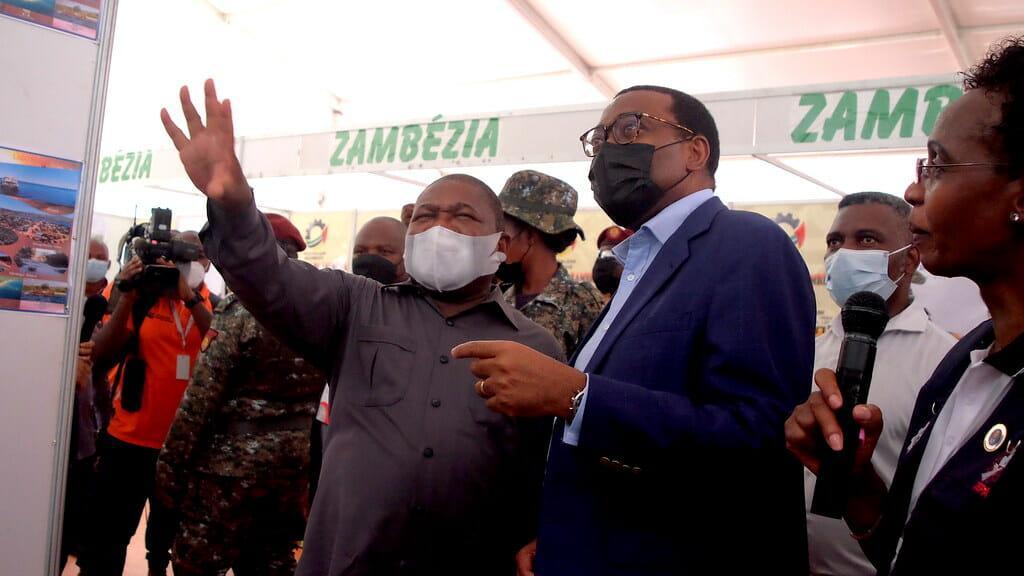By Burnett Munthali
Africa-Press – Mozambique. Today we take a look at Malawi’s Economic Growth compared with neighboring Mozambique. Hopefully, this will help readers appreciate how Malawi is featuring and what could be done in order to improve ourselves and indeed our economy at large.
Food Security
Statistics in August 2022, indicated that between October 2022 and March 2023, the situation was expected to deteriorate, with 3.8 million people in Malawi (20% of the population) expected to face high levels of acute food insecurity (IPC Phase 3), an increase by 8% compared to the current period. In Mozambique, national production is expected to be close to the five-year average but may be lower than last year due to reduced crop yields and crop losses following multiple climatic shocks in 2023.
Inflation Rate
According to data published monthly by National Statistical Office, the inflation rate in Malawi increased by 29.2 % in May 2023 over the same month in the previous year. The maximum level was 37.9 % and the minimum was 6.3 %. Reserve Bank of Malawi sees inflation averaging 24.5%. The Reserve Bank of Malawi (RBM) has revised upwards its average inflation target for 2023 to 24.5 percent. The projection is 5.8 percentage points higher than the 18.2 percent earlier estimate. The annual inflation rate in Mozambique eased for a second month to 8.23% in May 2023, down from 9.61% in the prior month and reaching its lowest point since April 2022. Prices slowed down mostly for food & non-alcoholic beverages (14.07% vs 17.02% in April) and transportation (10.67% vs 11.61%).
Economic Outlook
Malawi’s economic outlook for 2023 is poor. The forecast has been maintained that real GDP growth will slow to just 0.7% in 2023. This is down from estimated growth of 1.0% in 2022, and from a projection prior to Cyclone Freddy of 3.7%. Mozambique’s economic recovery has gained momentum. Sectors most impacted by COVID-19 (hospitality, transport, and communications) have rebounded, and agriculture has benefited from favorable rainfalls. Growth in 2022 stood at 4.1 percent and is projected to rise to 5 percent in 2023.
GDP Growth Rate
In Malawi, the GDP growth rate is projected to rebound to 2.0% in 2023 and 3.5% in 2024, driven by a recovery in agriculture, tourism and exports, and foreign direct investment. Headwinds include weather-related shocks and the prolongation of Russia’s invasion of Ukraine. In Mozambique, Global GDP growth in 2023 is projected to be 2.7%, the lowest annual rate since the global financial crisis, with the exception of the 2020 pandemic period. A modest improvement to 2.9% is foreseen for 2024. World Economics estimates Mozambique’s GDP to be $63 billion – 54% larger than official estimates. 2023 data is based on IMF growth rate estimates applied to World Economics GDP data.
Economic Overview
The economic situation in 2022 in Malawi was that GDP growth was projected to decline to 0.9% in 2022, from 2.8% in 2021, with lower agricultural output, erratic electricity supply, forex shortages affecting the importation of raw materials, and high global commodity prices. Economic growth is projected to slightly increase in 2023 but remains subdued. Mozambique’s economic recovery has gained momentum. Sectors most impacted by COVID-19 (hospitality, transport, and communications) have rebounded, and agriculture has benefited from favorable rainfalls. Growth in 2022 stood at 4.1 percent and is projected to rise to 5 percent in 2023.
GDP Ranking
Worldwide gross domestic product in 2021 was at about 12,183 USD per capita. GDP in Malawi, on the other hand, reached USD 635 per capita, or 12.63 billion USD for the whole country. Malawi is one of the smaller economies and was at that time ranked 139. The GDP figure in 2021 was $15,777 million, Mozambique is number 130 in the ranking of GDP of the 196 countries that we publish. The absolute value of GDP in Mozambique rose $1,620 million with respect to 2020. The GDP per capita of Mozambique in 2021 was $492, $38 higher than in 2020, it was $454.
Conclusion
In conclusion, first, we can sadly say that Malawi is not moving forward in all aspects of our economy. Briefly just look at this: In August 2022, Malawi’s Food Security was expected to deteriorate, with 3.8 million people in Malawi (20% of the population) expected to face high levels of acute food insecurity, and indeed, Malawi is food insecure in 2023 as we speak, while Mozambique has food security despite climatic shocks in 2023. Probably, the damage by Cyclone Freddy was even much worse in Mozambique.
Secondly, the inflation rate in Malawi increased by 29% in May 2023 and the same happened in the same month in 2022. The maximum level was 37.% and the minimum was 6%. The reserved bank of Malawi saw an inflation rate at an average of 24.5% while the annual inflation rate in Mozambique eased in May 2023.
The inflation rate in Mozambique is going down and the economic recovery has gone up despite the impact of COVID-19. While the Malawi government partly blames COVID-19 for disturbing economic growth.
Thirdly, Mozambique’s economic recovery has gained momentum whole Malawi s economic outlook for 2023 is poor. The reasons given are Cyclone Freddy.
Finally, the worldwide gross domestic product in 2021 was at about 12,183 USD per capita. However, the GDP in Malawi reached 635 USD or 12.63 billion USD for the whole country and it’s ranked 139 while the GDP of Mozambique in 2021 was 15,777 million USD. Mozambique is number 130 in the taking of GDP of the 196 countries that are published. Malawi is a sad story full of stagnation, blame games and excuses, poems and speeches.
For More News And Analysis About Mozambique Follow Africa-Press






